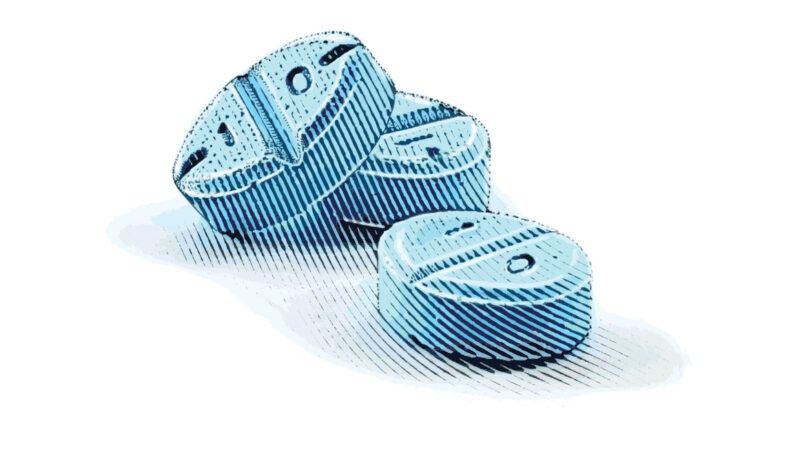Short on Adderall? Blame DEA Production Caps
Each year, the DEA sets production limits for certain drugs, including some ingredients in common amphetamine pills like Adderall.

Early in the COVID-19 pandemic, prescriptions for Adderall, the stimulant medication used to treat attention deficit hyperactivity disorder (ADHD), skyrocketed. There were two main reasons. Due to social distancing, the Drug Enforcement Administration (DEA) allowed physicians to prescribe Schedule II controlled substances via telehealth appointments. And second, parents noticed that their children, suddenly relegated to Zoom schooling, were struggling to pay attention.
But easier access and more users were not the only culprits in the Adderall shortage that the Food and Drug Administration (FDA) officially recognized in October 2022. While the FDA blamed "manufacturing delays" at Teva Pharmaceuticals (the main source for both branded and generic versions of the drug), federal and state officials also played a major role.
Each year, the DEA sets production limits for the ingredients of Schedule I and II drugs, and manufacturers apply for pieces of the quotas. Total production of a drug cannot exceed the DEA's ceiling.
The DEA says it determines the quotas based on the amount that is annually prescribed. But even after the FDA reported a shortage, the DEA kept the 2022 levels intact in its 2023 quotas for Adderall's ingredients: dextroamphetamine saccharate, amphetamine aspartate, dextroamphetamine sulfate, and amphetamine sulfate.
Government-backed lawsuits that blamed pharmaceutical distributors for contributing to opioid abuse and deaths created another kink in the stimulant supply chain. After the three largest distributors and Johnson & Johnson reached a $26 billion settlement with state and local governments in February 2022, Reuters reported, the companies began cracking down on what they deemed suspicious orders from independent pharmacies. When pharmacies dispensed stimulants such as Adderall and sedatives such as Xanax to the same patient, for example, the distributors saw a red flag.
These pharmacies were filling prescriptions written by licensed physicians, and psychiatrists told Reuters there are legitimate reasons to prescribe both types of drugs to the same patient, whether to treat comorbidities or to control side effects. The distributors nevertheless cut off multiple independent pharmacies from all controlled substances in order to placate law enforcement. The blackballed pharmacists noted that large chains like CVS and Walgreens, which dispensed far more opioids over the years, went untouched.
The DEA claims as much as a third of American college students use Adderall without a prescription. But limiting the legal supply has the side effect of making it more difficult for students and employees to get the medications to help them focus.


Show Comments (17)